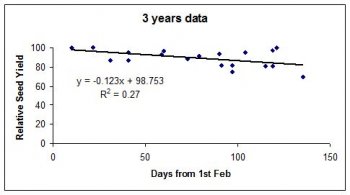
FAR says it is working with MPI, Federated Farmers, regional councils and other industry groups to encourage all farmers to look out for the weed, which has so far been identified in North Canterbury and Central Otago.
How did it get here?
It appears the finds are associated with fodder beet crops and MPI is looking at all possible ways the plants could have arrived at the properties concerned.
What does it look like?
Velvetleaf is a member of the Mallow family. It is a broad-leafed weed that grows very tall, between 1m and 2.5m. It has buttery-yellow flowers, which appear over summer and autumn. Leaves are heart shaped and velvety to touch.
What can be done?
FAR asks growers to keep a look out for velvetleaf, especially if they have fodder beet on their farms. It should be easy to spot amongst this season’s fodder beet plantings as it stands well above the growing beet and is very distinctive.
If velvetleaf is found, please help to get rid of this weed from the South Island by taking the following actions:
- Do not pull the plant out;
- If possible, take a photo of the plant/s;
- Mark the location so it is easy to find again;
- Contact MPI immediately on the Pests and Diseases Hotline – 0800 80 99 66. All calls to the hotline are treated in confidence. Your call will be referred to an MPI incursion investigator who will call you back to make arrangements for collecting the plants.
MPI hopes that with help from growers and industry, they will be able to locate the majority of velvetleaf plants and remove them before they can spread their seed. Once velvetleaf seed falls, it can persist for decades, making control a very long term process.
More information
- Full information is available at: www.mpi.govt.nz/alerts
- Pests and Diseases Hotline – 0800 80 99 66
North Island
Velvetleaf is known to be present in the Waikato where it is well managed by growers and the regional council.



 Classifieds
Classifieds

